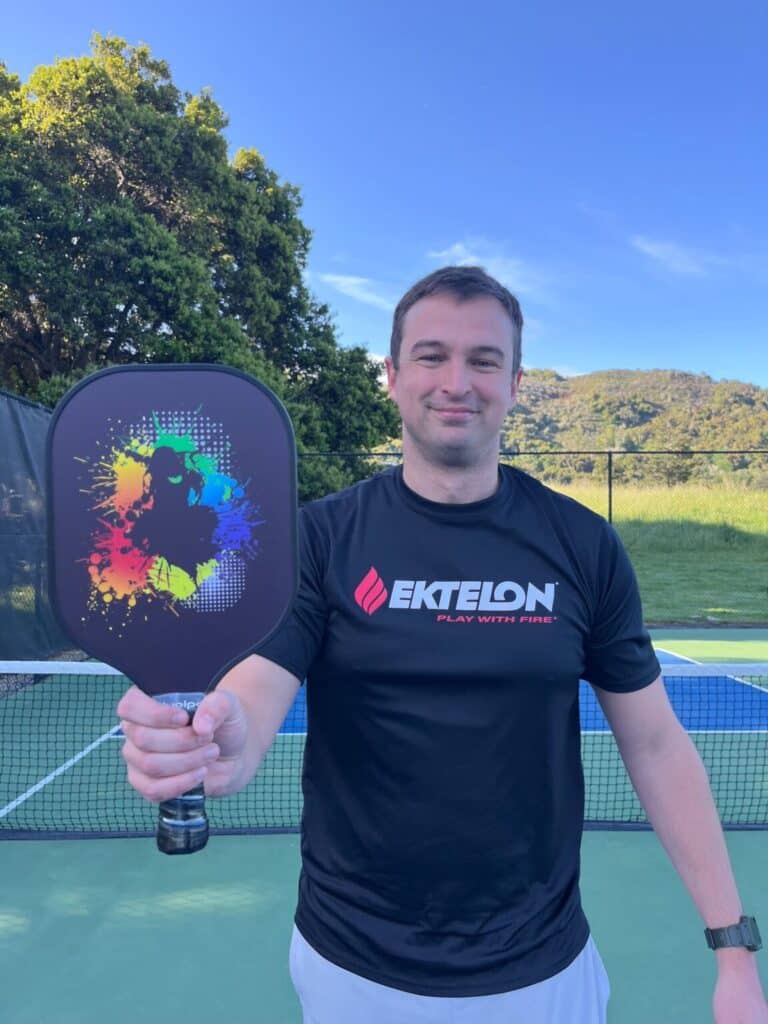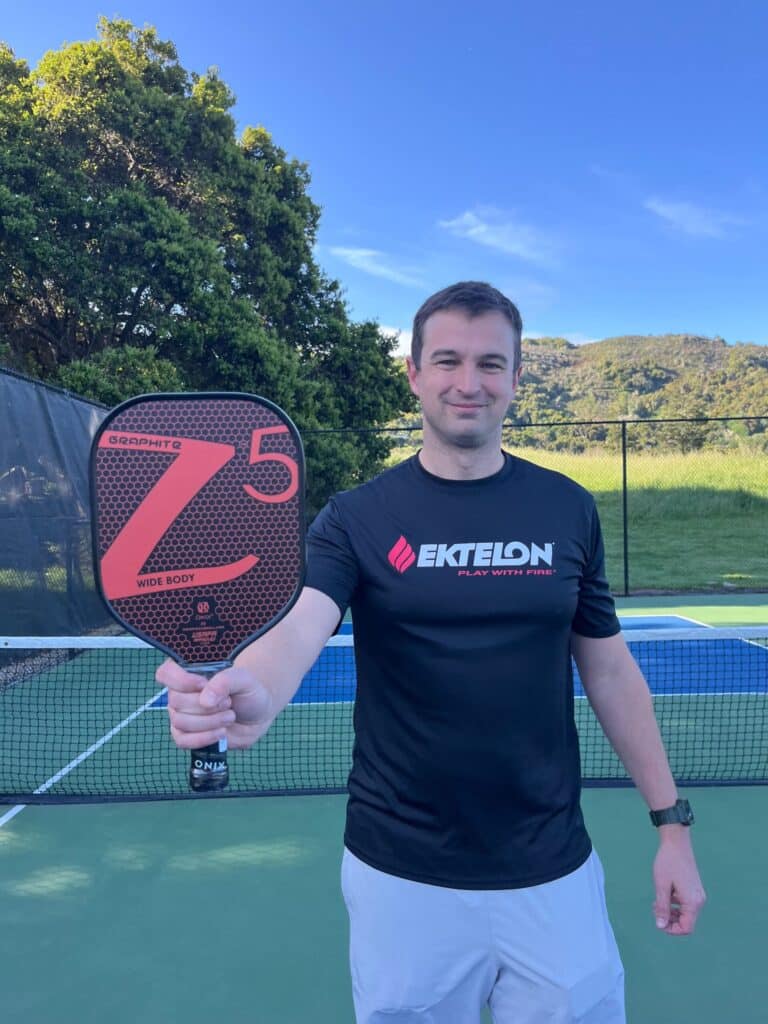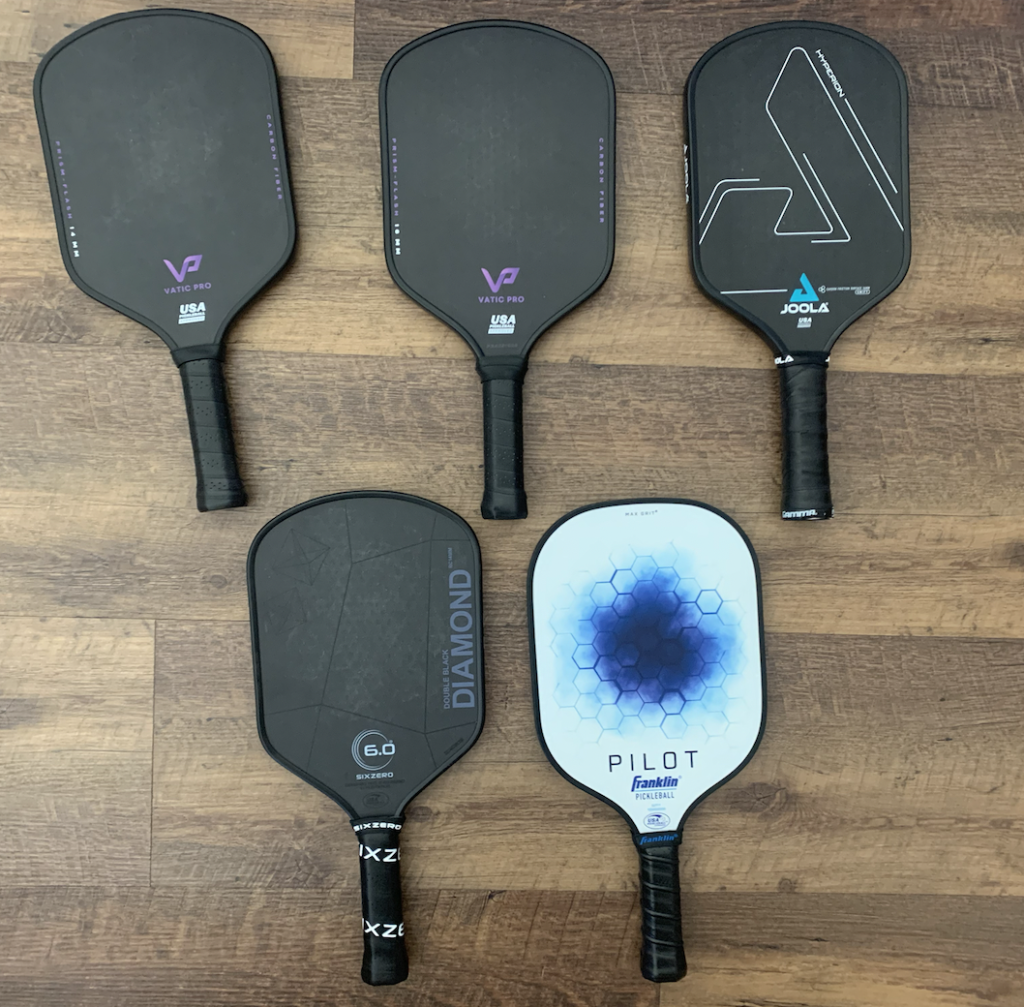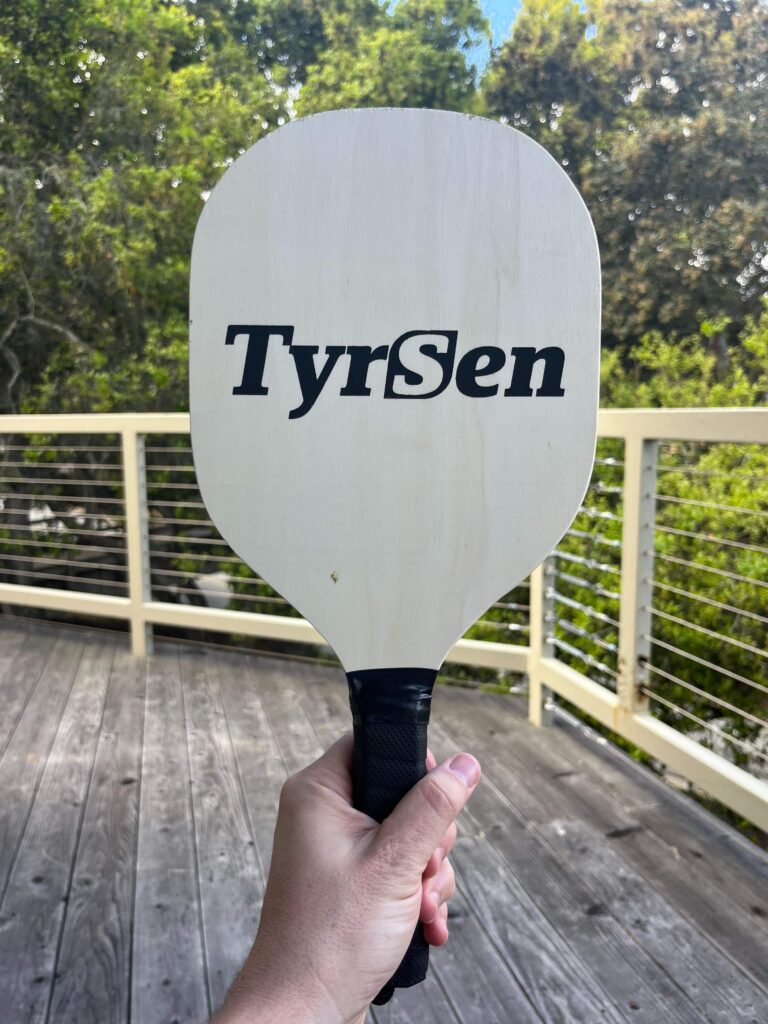You are getting into pickleball and realize that pickleball paddle material is crucial, so you wonder if graphite or fiberglass pickleball paddles are best for you.
I’ve purchased 25-50 pickleball paddles this year in 2024, so I understand both Graphite pickleball paddles.
To help, I am going to use two common paddles for my comparison:
Although we are covering the best type in this article, I would probably recommend taking the free pickleball paddle quiz below to see what type of paddle may be best. I say that because my favorite paddles are often Carbon Fiber paddles, such as the Vatic Pro Prism Flash.
In this article, we are going to cover the following:
- Playability differences between graphite and fiberglass paddles
- Cost differences
- Alternatives
Let’s start with the most important, which is playability differences.
1. Playability
Let’s compare graphite vs fiberglass in terms of power, spin, and control.
Power
Fiberglass paddles tend to offer more power. This is because they are generally heavier than graphite paddles. The extra weight allows you to hit the ball harder without putting in as much effort. When I play with a fiberglass paddle, I notice my shots have much more oomph. It’s like the paddle does some of the work for me. This can be a big advantage, especially if you like to play aggressively or want to keep your opponents on their toes.
On the other hand, graphite paddles are lighter. They still offer good power, but you must swing harder. For some players, this lighter weight translates to quicker reactions and swings. A graphite paddle might suit you better if you rely on your strength and speed,

Spin
When it comes to spin, fiberglass paddles excel. The textured surface of fiberglass grips the ball better, allowing for more spin. I find it easier to put a spin on my serves and returns with a fiberglass paddle. This can make your shots unpredictable and difficult for opponents to handle. Fiberglass is a great choice if you like to add a bit of flair to your game with tricky spins.
Graphite paddles can still generate spin, but not as much as fiberglass. The smoother surface doesn’t grip the ball as effectively. However, some high-end graphite paddles have special coatings to enhance spin. I’ve noticed that while they don’t match fiberglass paddles in spin potential, they do a decent job.
Control
Control is where graphite paddles shine. Their lighter weight allows for greater maneuverability. I feel like I have more precision with a graphite paddle. It’s easier to place the ball exactly where I want it. This is especially useful in dinking and delicate shots. Graphite is likely the better option if you value control and finesse in your game.

Fiberglass paddles, being heavier, can sometimes feel less precise. The added power can make it harder to control softer shots. But with practice, you can still manage good control with fiberglass. It’s a trade-off between raw power and precise placement.
Next, let’s cover the differences between graphite and fiberglass paddles in terms of cost.
2. Cost Differences
Graphite paddles are generally cheaper than fiberglass ones. Graphite paddles start at around $40, while fiberglass paddles often begin at $60. The prices can go up significantly for high-end models. For example, high-quality graphite paddles can cost up to $150, whereas top-tier fiberglass paddles can reach $200 or more.
Material Quality
One reason for the price difference is the material quality. Graphite paddles are usually lighter and more durable. They often have a sleek, smooth finish. I’ve noticed that the better the graphite quality, the more expensive the paddle. High-end graphite paddles might have layers of carbon fiber or other composites, enhancing their performance and durability.
Fiberglass paddles, on the other hand, often use a combination of fiberglass and other materials. This mix can affect their price. Fiberglass paddles with advanced construction techniques or special coatings can be pricier. I’ve seen some fiberglass paddles with textured surfaces or reinforced edges, which can increase their cost.
Technology and Features
The technology and features also play a big role. Graphite paddles with advanced technologies like vibration dampening, specialized core materials, or ergonomic grips tend to be more expensive. I’ve found that these features make a paddle feel more comfortable and improve playability. The latest graphite paddles might also have honeycomb cores or proprietary materials that enhance power and control.
Fiberglass paddles with extra features, like custom graphics, reinforced frames, or advanced surface textures, are also pricier. I’ve noticed that some high-end fiberglass paddles have unique designs or special features to boost spin and power, making them more appealing to serious players.
Brand and Manufacturing
The brand and manufacturing process can significantly affect the price. I’ve observed that well-known brands often charge more for their paddles. They invest in research, development, and quality control, which adds to the cost. Premium brands also tend to offer better warranties and customer support.
Handcrafted paddles or those made with meticulous attention to detail usually come at a higher price. Some manufacturers use traditional techniques or special materials that make their paddles stand out. These paddles are often more expensive due to the craftsmanship involved.
3. Alternatives
Let’s consider two alternatives to graphite and fiberglass paddles.
Carbon Fiber Paddles: My favorite
After trying both fiberglass and graphite, I discovered carbon fiber paddles. These paddles offer a unique blend of power, control, and durability. Here’s why I prefer them:
- Balanced Performance: Carbon fiber paddles provide the perfect balance between power and control. They are not as heavy as fiberglass paddles but offer more power than graphite. When I use a carbon fiber paddle, I feel like I get the best of both worlds.
- Durability: Carbon fiber is incredibly durable. It withstands wear and tear better than fiberglass and graphite. I’ve had my carbon fiber paddle for a while, and it still performs like new. This durability makes it a great investment.
- Enhanced Spin: The surface of carbon fiber paddles grips the ball well, allowing for excellent spin. I can add tricky spins to my shots without sacrificing control. This is a big advantage in competitive play.
- Comfort: Carbon fiber paddles often have advanced vibration-dampening technology. This reduces the strain on my arm and makes long games more comfortable. I can play for hours without feeling fatigued.
I’ll also be honest, I appreciate the popping sound of my favorite carbon fiber paddle.

Wood: No one’s favorite
I am not even going to spend any time on wood paddles.
I do not honestly think that wood paddles are anyone’s favorite. Here’s a picture of my wooden paddle that looks almost brand new because it gets so little play.

Conclusion
You are considering whether graphite or fiberglass pickleball paddle material is best for your next paddle. I would argue that you should also consider carbon fiber paddles, but hopefully, the pickleball paddle quiz can help you figure out which is best for you and a specific paddle.
